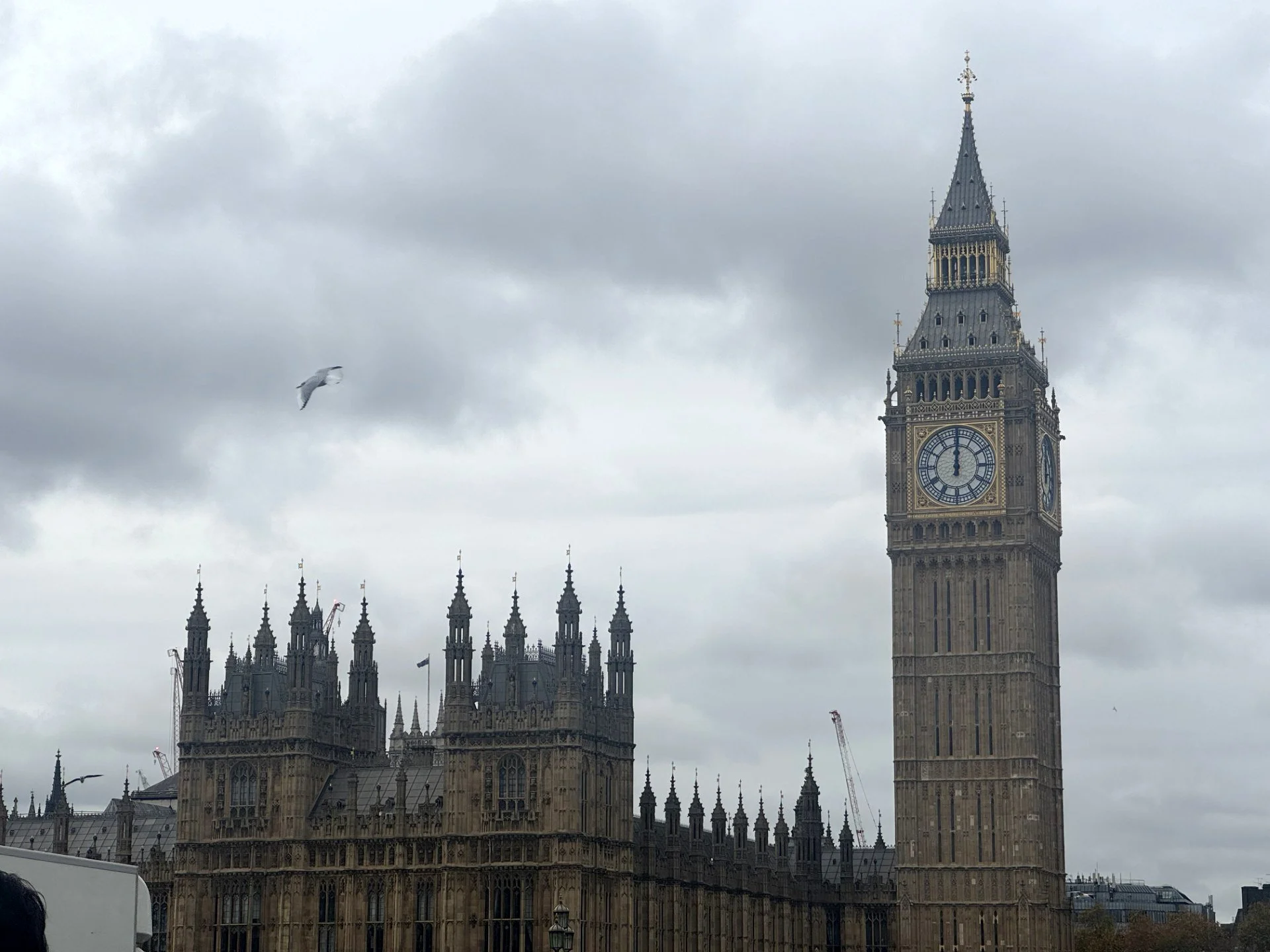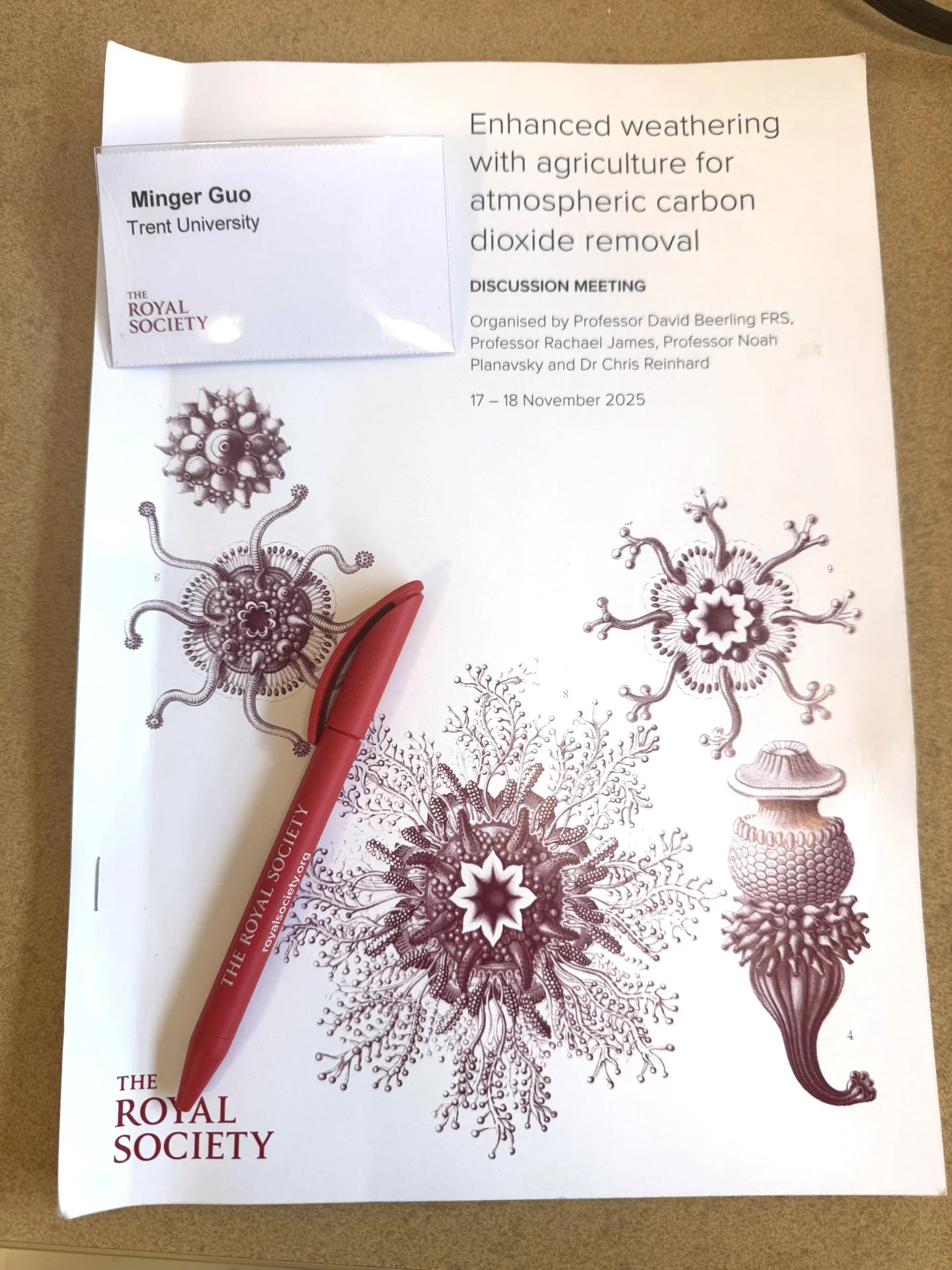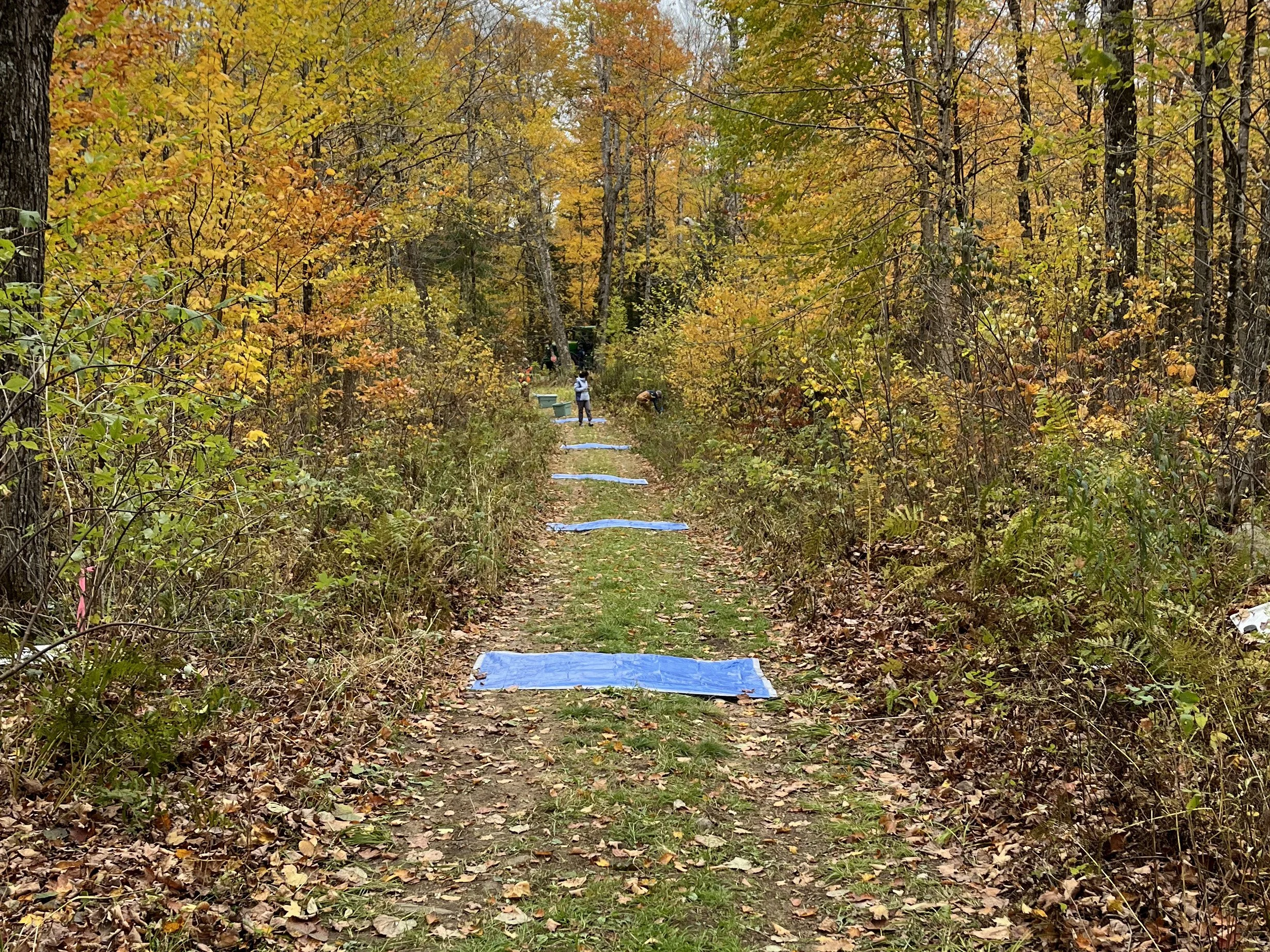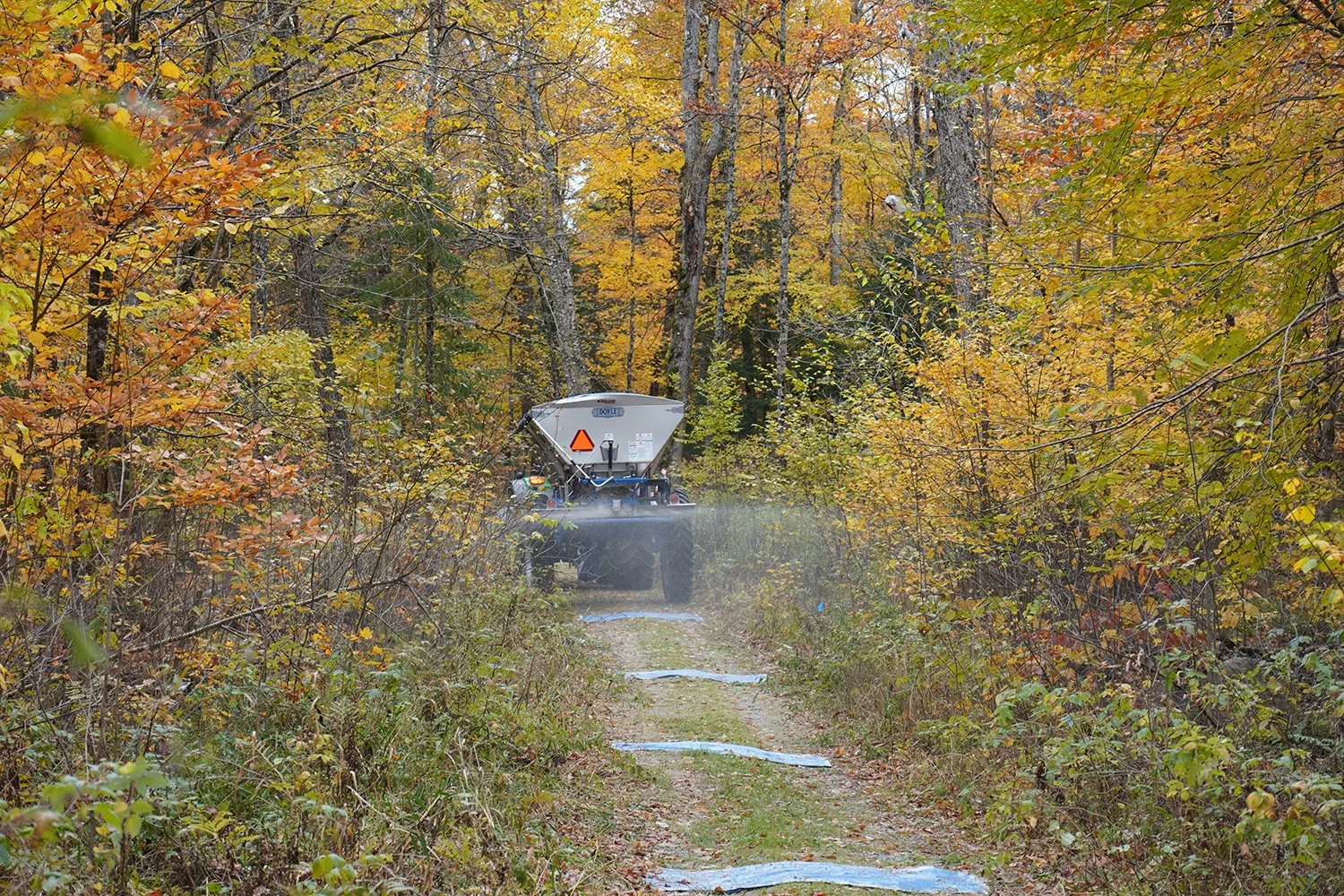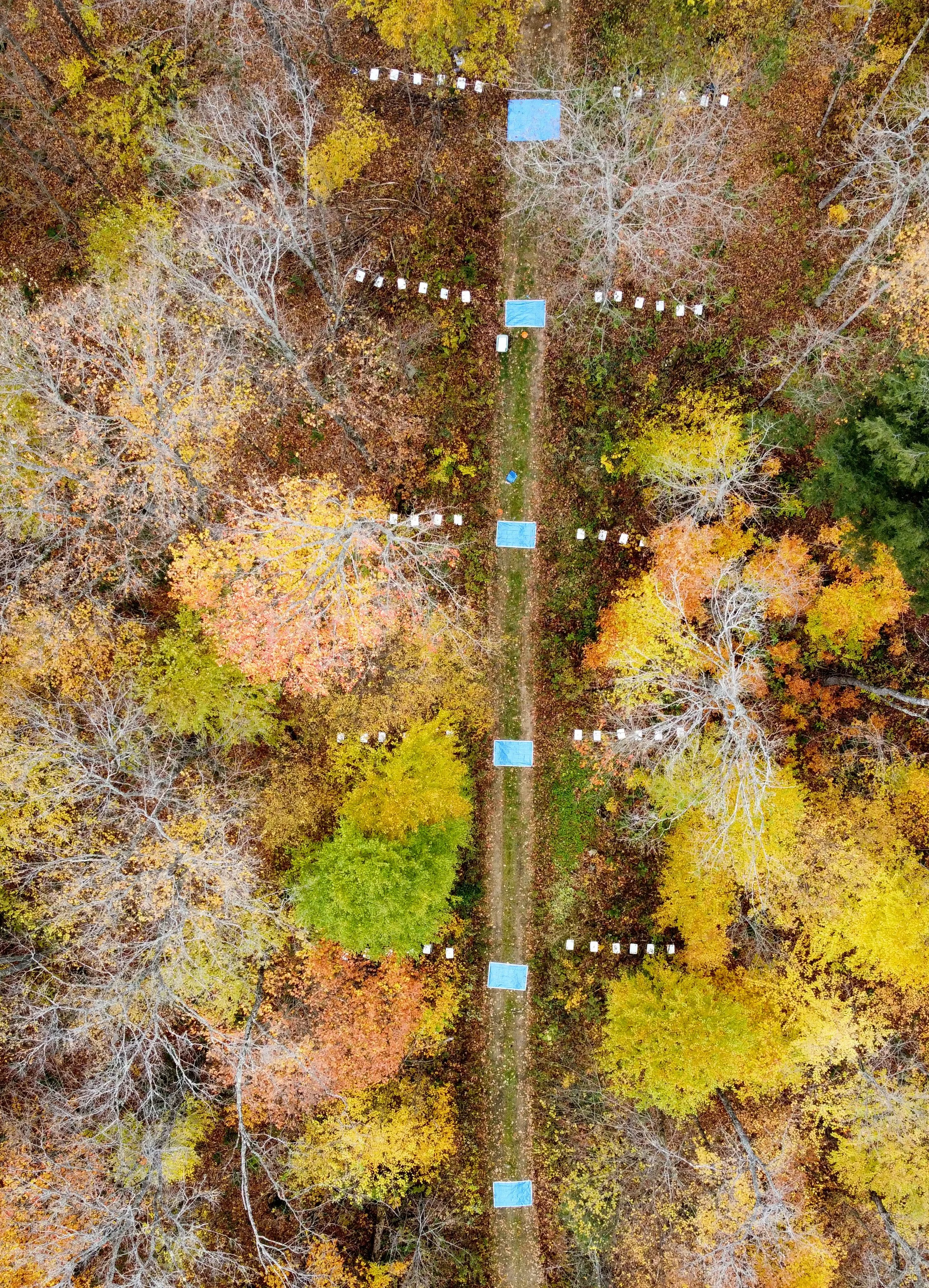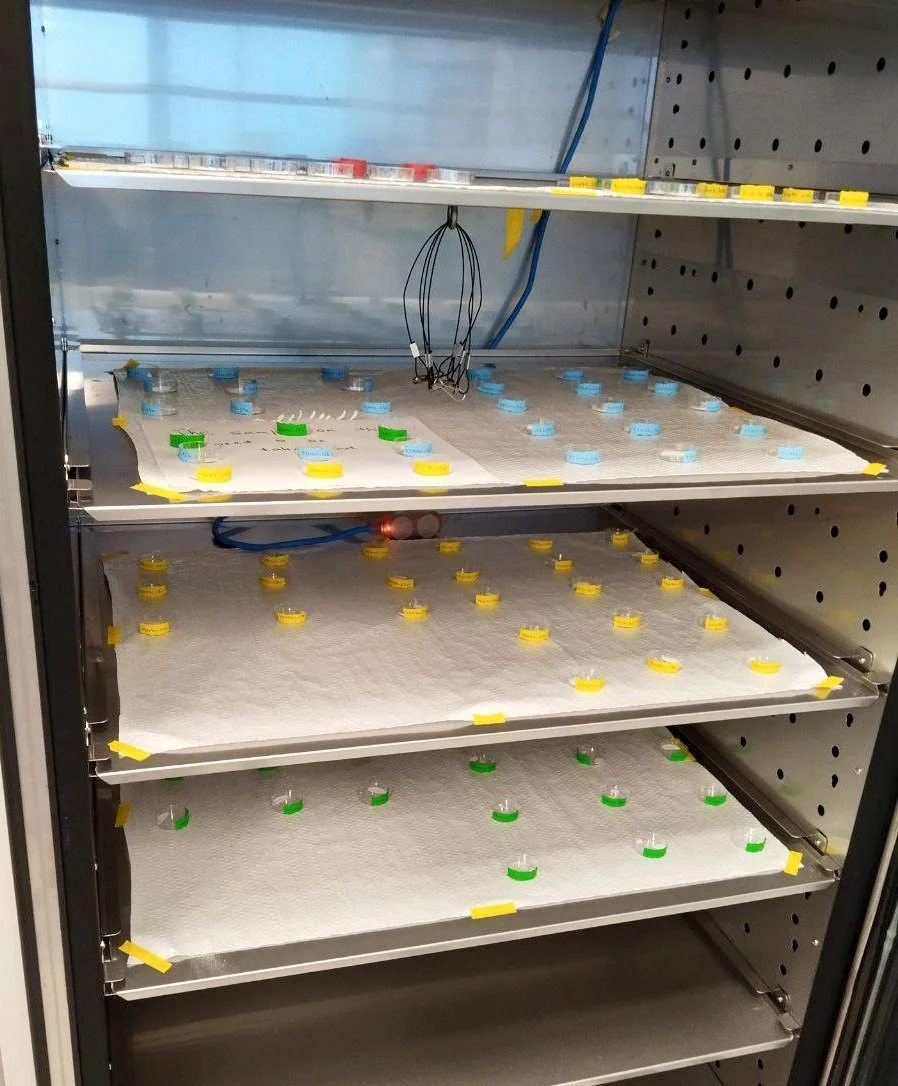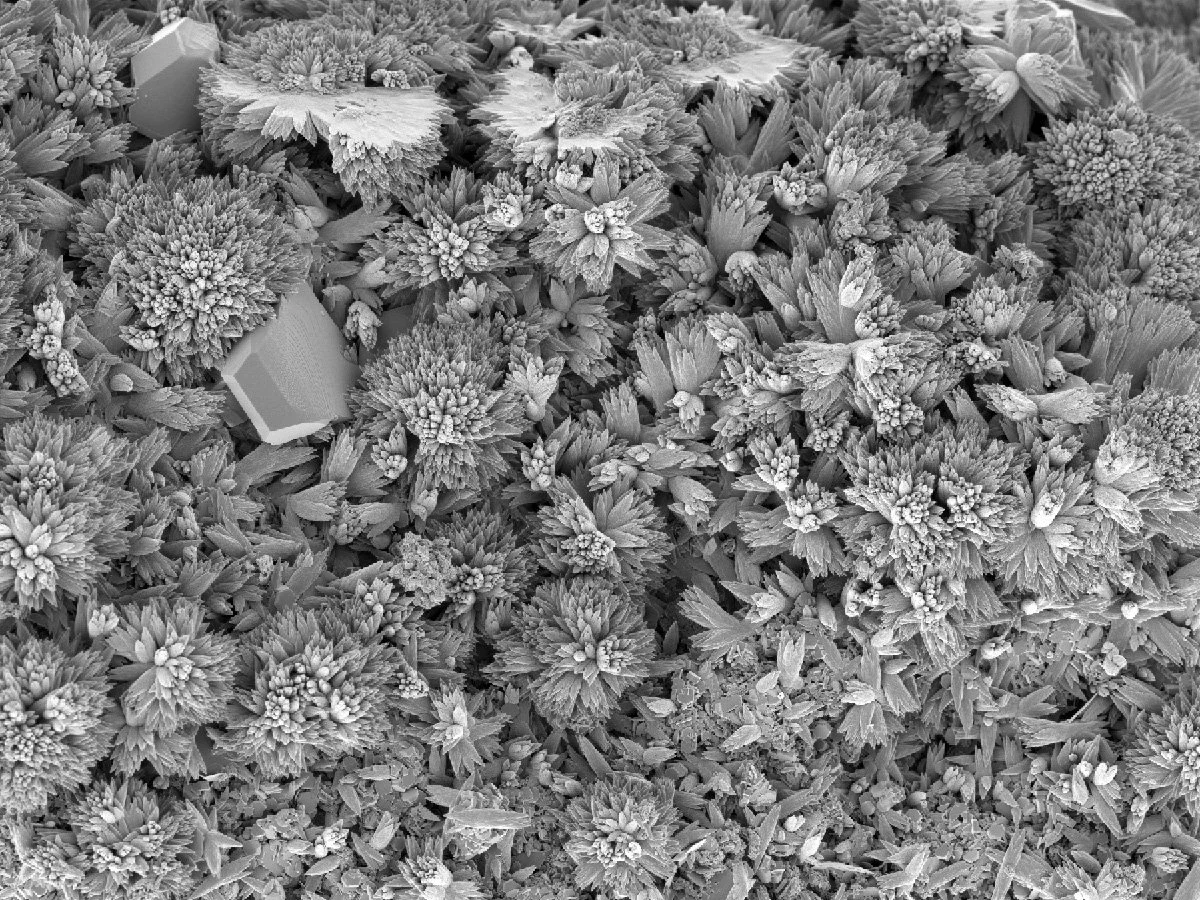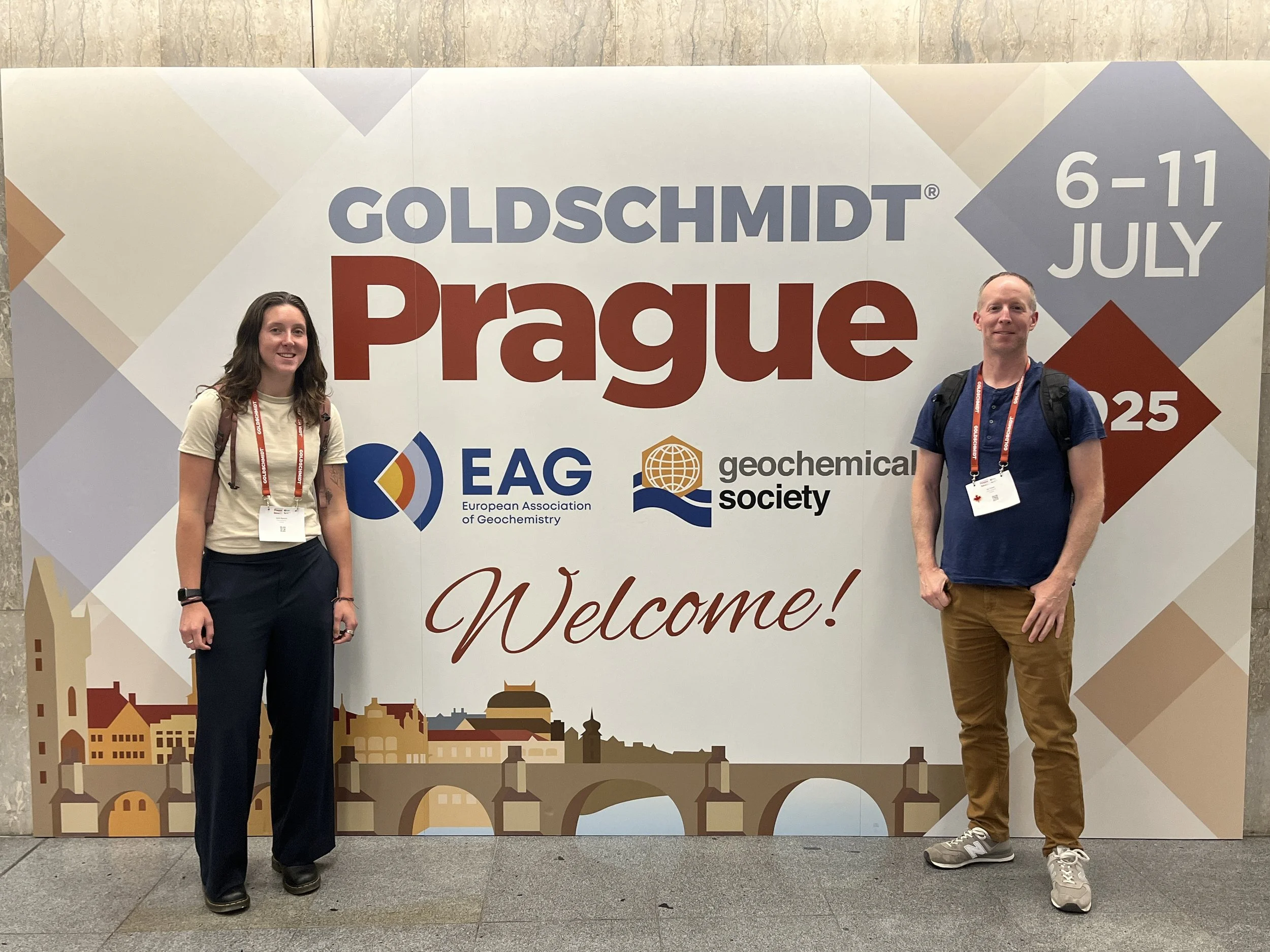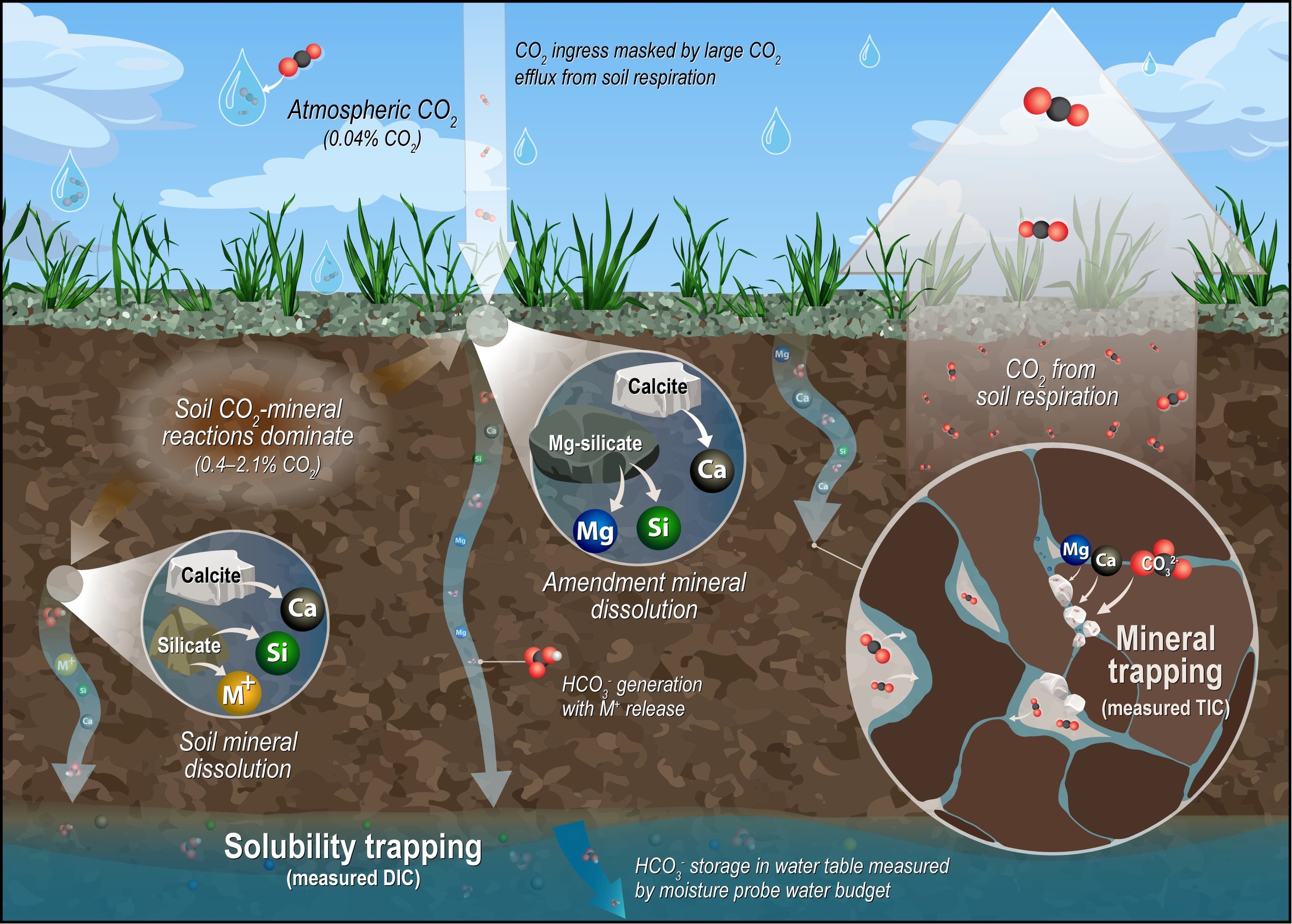Last week, Minger attended the discussion meeting Enhanced Weathering with Agriculture for Atmospheric Carbon Dioxide Removal in London, UK. Many thanks to the organizers for hosting such an inspiring event! Minger was exciting to learn about the most recent ERW research and to hear a wide range of perspectives. She was especially exciting to see the growing number of forest-based ERW studies. Minger presented a poster titled Quantifying Carbon Dioxide Removal by Enhanced Rock Weathering of Wollastonite at Haliburton Forest, Ontario, Canada, where she shared our latest one-year monitoring results from our field trial in Haliburton Forest. She is always happy to chat more if you’re interested in our work!
New publication by Lance Dostie
Relationships between carbonation rate (wt.% CaCO3/h) and carbonation extent (wt.% CaCO3) across different CO2 concentrations are based on the reaction of (a) CaO and (b) Ca(OH)2 in the variable CO2 concentration experiment.
Lance, Kwon, and I have published a second manuscript in the Journal of Cleaner Production on CaO looping for CO2 removal. This study details three experiments that investigated the balance between CO2 removal and CO2 supply. We also quantified CO2 removal rates at and below atmospheric CO2 concentrations, which can occurring when CO2 supply is insufficient. Congratulations Lance on an outstanding paper!
New publication by Minger Guo!
Incorporating enhanced rock weathering into sustainable forest management
In this study, postdoctoral fellow Minger Guo examines the great potential of CO2 removal (CDR) through incorporating enhanced rock weathering (ERW) into managed. With an application trial in Haliburton Forest in Ontario, Canada, we assessed the amendment and dosage heterogeneity that arises during application and its impact on accurately quantifying CDR in forests. Thanks to our collaborators at Haliburton Forest & Wild Life Reserve and the University of Alberta. Special thanks to Canadian Wollastonite for supplying the amendment. This paper was published in the Journal of Environmental Management.
Trail with tarps to capture rock powder at Haliburton Forest, Ontario, Canada.
Spreader applying wollastonite-rich rock powder to a section of forest.
Transects of tarps and trays along a trail at Haliburton Forest, Ontario, Canada. This trial assessed the dosage heterogeneity that arises during application of rock powder in a forest, which as implications for CO2 removal quantification.
Understanding geochemical influences on lime looping efficiency
Lime looping is a direct air capture (DAC) technology involving the repeated use of calcined limestone/lime (CaO) to absorb CO2 from the atmosphere. Owing to the highly reactive nature of CaO and its hydrated product, portlandite [Ca(OH)2], these minerals are ideal candidates for rapid carbonation and offer large-scale CO2 removal potential. However, in spite of their fast reaction rates, the route to complete carbonation is often hindered by several factors that can greatly limit process efficiency. Shaheen Akhtar, a postdoctoral researcher in PowerGeolab, is carrying out experiments using calcined limestone to identify and assess these limitations. The research revolves around quantifying rates and extents of carbonation under set variables and providing insights into underlying reactions, supported by scanning electron microscopy. The goal of the study is to highlight geochemical perspectives that can provide motives for further spiking efficiency of existing CO2 removal technologies and ultimately take part in decelerating climate change.
Batch experiments inside a ThermoScientific Forma 3940 Environmental Chamber.
Portlandite reacting with atmospheric CO2 to form calcium carbonate.
Go Karting and Rolling Grape Lab Social
Our lab had an awesome time karting at the Peterborough Kartway! After Jamie’s go-kart was fuelled up, she rocketed to victory (though no one was keeping track)! We followed up with drinks and pizza, and many games of Mineral Supertrumps! Jasmine was a three-time winner!
Goldschmidt 2025 in Prague
Jamie and Ian attended Goldschmidt 2025 in Prague! Jamie gave an outstanding presentation entitled Quantifying carbonation rates of periclase and brucite powders at elevated pCO2: Implications for MgO looping in the Geochemistry of Carbon Capture and Storage session. Ian also gave a talk on enhanced rock weathering for sustainable forest management. All in all, a very successful meeting with so many opportunities to see amazing research from experts around the world!
New publication from Schaffer et al.
An outstanding paper by former Master's student Zivi Schaffer on enhanced rock weathering (ERW) of kimberlite residues. Zivi conducted field experiments to evaluate the potential of kimberlite residues from diamond mines for use in ERW, demonstrating that these residues are similar to basalt waste fines from quarries. A combination of soil pore water chemical data and a water balance was used to quantify carbon dioxide removal rates. Furthermore, she proportioned these rates into silicate and carbonate weathering components, showing that carbonate weathering dominated the CDR. Lastly, stable carbon isotope data were used to demonstrate that sequestered CO2 is sourced from microbial respiration rather than the atmosphere; hence, ERW is more of a CO2 avoidance technology than a CO2 removal technology.
Congratulations, Zivi, on your first paper; it's a great one!
A conceptual diagram illustrating key processes of enhanced rock weathering in soils, including carbonate and silicate weathering in the amendment and soil, and the dominance of microbial respiration.
Convocation Congratulations!!!
Congratulations to Jamie, Victoria, and Larissa for graduating from the Environmental Geoscience program at Trent University. These three outstanding students were the top trio in the program and I’m ecstatic that they are staying to complete their Master’s degrees!
Looking good in green and purple!
Cariboo Plateau Fieldwork
The PowerGeolab had a successful trip to the Cariboo region in Central British Columbia last week. Master's student, Jamie Burnett, and Ian Power had the opportunity to join Maija Raudsepp and Sasha Wilson from the University of Alberta for several days in the field exploring many beautiful and geologically interesting alkaline lakes.
We explored Last Chance, Milk, Alberta, Goodenough, Deer, Basque, and Margaret lakes. These lakes all had a unique geochemistry which allowed us to observe natural magnesite, hydromagnesite, sodium carbonate, and (stinky!) magnesium sulfate. Successful coring, pore water sampling, and sediment collection was conducted in all kinds of weather conditions!
The collected magnesite and hydromagnesite samples were brought back to Trent University where they will be characterized and used in experiments to observe the efficiency of a MgO looping technology that incorporates natural samples from different source locations in the world.
This was a great time in the field with great discussions about the geochemistry of the lakes and the geology of the surrounding area. Special thank you to everyone involved who made this a successful trip – even Ian’s drone was able to help out with some water sampling (prototype 1.0 in progress).
Milk Lake, Cariboo Plateau, British Columbia, Canada
GAC-MAC in Ottawa 2025
The PowerGeolab was well represented at GAC-MAC (Geological Association of Canada - Mineralogical Association of Canada) in Ottawa with Jamie, Victoria, and Larissa presenting their research on oxide mineral carbonation, CO2 mineralization within non-mafic mine wastes, and enhanced rock weathering for sustainable forests! Thanks to all the organizers for a successful conference!

